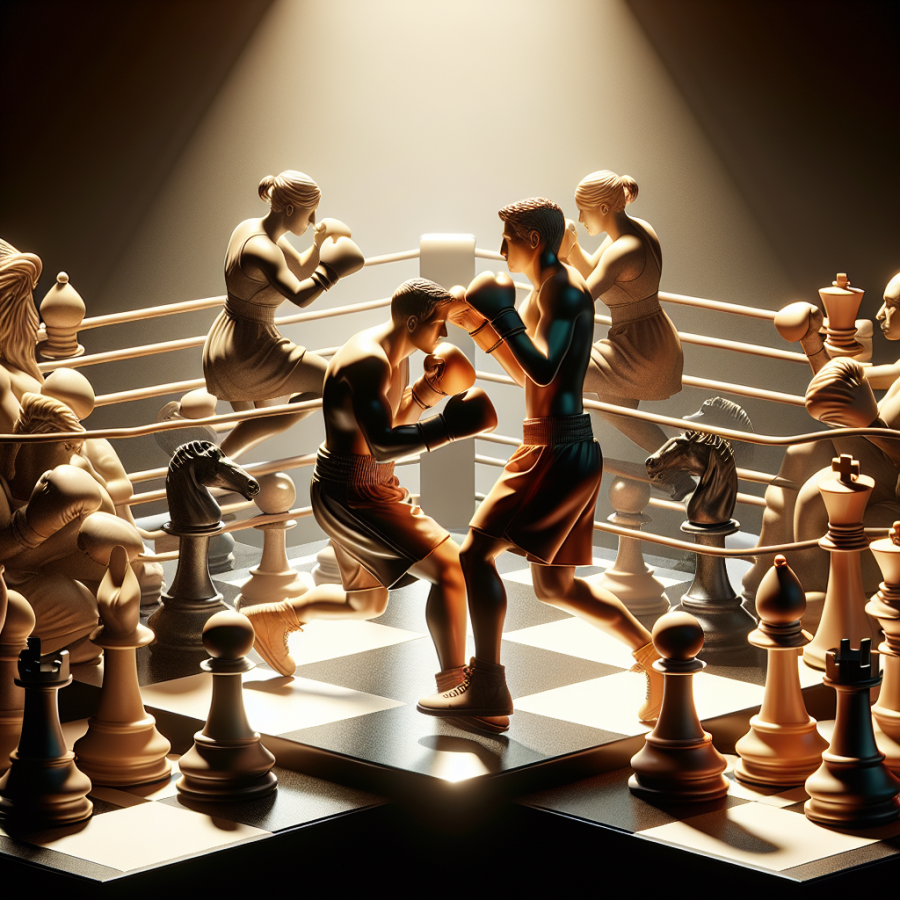Understanding the Rules and Unique Aspects of Chess Boxing: A Test of Intelligence and Strength
Chess boxing is a fascinating hybrid sport that seamlessly combines physical strength and intellectual prowess. Balancing between two vastly distinct spheres, this unconventional game offers a gruelling test of intelligence and strength. Understanding the rules and unique aspects of chess boxing can open up new perspectives and provide insights on its fascinating world.
A chess boxing match consists of 11 rounds- 6 rounds of chess and 5 rounds of boxing. Each round is carefully timed, with 3 minutes for chess followed by a 3-minute round of boxing with a minute's break in-between to change gear. The game starts with a round of chess, setting the stage for a cerebral battle before the physical contest takes flight. Undoubtedly, the combination of two polar opposite games creates a unique set of rules.
One of the intriguing aspects of chess boxing is the alternating pattern of rounds, shifting from intellectual engagement to intense physical activity. This pattern not only tests each player's endurance but also their ability to switch mentality and tactics quickly. Just as players must calculate moves on the chess board, they must adapt swiftly to the fast-paced blows in the boxing ring.
To win a chess boxing match, one can either knock out the opponent in the boxing ring, achieve a checkmate on the chessboard, or have the opponent exceed the chess round's time limit. If the chess game ends in a stalemate, the boxing points decide the winner, reinforcing the equal importance of both games. This unique path to victory is a poetic testament to the skills that each player must master.
Adding to its originality, judges oversee the fair play in both the chess and boxing stages. The decisions in the chess rounds are taken by a player called 'referee', who is a certified chess arbiter. During the boxing rounds, a standard boxing referee takes charge. This dual-oversee setup emphasizes the seriousness with which each component of the game is handled.
While chess is a game of strategy and patience, boxing requires strength and agility, making the physical conditioning for chess boxing unique and challenging. Players must simultaneously train their minds for rigorous chess matches while keeping their bodies in peak physical condition for boxing. Moreover, the constant shift from mental to physical exertion takes a significant toll on players, making chess boxing not for the faint-hearted.
Apart from the technical training, mental elasticity is vital in chess boxing. Rapid shifts between chess and boxing demand a flexible and versatile mind. Mental endurance is just as critical as physical stamina, tangibly impacting the match outcomes.
Chess Boxing: Merging the Intense Tactics of Chess with the Physicality of Boxing
Chess Boxing is an unconventional sport that has emerged into the spotlight in recent years, combining the cunning game of chess with the physical battle of boxing. On one hand, there is the intellectual engagement that comes from chess, where strategic thinking, foresight, and tactical maneuvers are essential for victory. On the other hand, there’s the raw, unfettered physicality found in boxing; a sport that demands agility, strength, and relentless endurance from its participants. In the world of Chess Boxing, both elements come together in a fascinating display of mental and physical prowess, challenging the misconception that brawn and brains can’t coexist in the same arena.
Contrary to popular belief, a Chess Boxing match doesn’t commence with pugilistic punches instead; it begins on a more cerebral note with a four-minute round of speed chess. The game is played on a digital board, with each move precisely timed. The combatants have to remain sharp, quick-witted, devising strategies and thinking several moves ahead.
Once the first round of chess finishes, the gloves come on. The chessboard is swiftly removed and the ring transforms into a typical boxing arena for a three-minute round of boxing. The boxers let their physical strength take over from their mental stamina, throwing precise punches and dodging the ones heading their way.
The continuous back-and-forth between chess and boxing is an endurance test, both mentally and physically. With each round, switching between two utterly different states of mind becomes progressively more taxing. The ability to withstand physical blows and the pressure of a ticking clock while constructing a winning chess strategy is what distinguishes a true chess boxer.
While the blend may seem harmonious, the scoring and victory mechanisms in Chess Boxing are slightly fragmented. A participant can win by knocking out their opponent in boxing, by checkmating them in chess, or if their opponent exceeds the time limit in chess. In addition, boxing rounds are also scored, meaning that if no checkmate or knockout happens, the contender with the most boxing points wins.
Boxing trainers and chess coaches work closely together to optimize the training regimen for Chess Boxing athletes. Given the unique nature of the sport, a meticulous balance has to be struck between physical training and cognitive exercises. Strategy games and puzzles are used to enhance cognitive abilities, focusing on improving concentration, decision-making speed and working memory. Physically, emphasis is put on building endurance, strength, and flexibility to make the switch between the sports more seamless.




